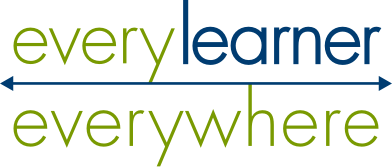By the time they get to college, most students have spent their entire academic careers being evaluated by the letters on nearly every daily homework assignment leading up to their report cards. The practice of “ungrading” questions the value of that near-constant grading and gives instructors another useful evaluation tool to help support learning.
Definitions of ungrading vary, and the term can be misleading because where it is used, a final grade is usually established. Ungrading practices typically involve the formative assessments, daily practice activities, project-based learning, portfolio work, reflection activities, and other work that can inform a final grade. For all of those, ungrading de-emphasizes performance goals and instead emphasizes learning goals by providing students with detailed feedback. Ungrading can reduce student anxiety and improve learning outcomes, and also has the potential to help instructors better support minoritized students in the classroom.
Robin Dunkin, Assistant Teaching Professor of Ecology & Evolutionary Biology and Assistant Faculty Director for the Teaching and Learning Center at University of California, Santa Cruz, notes that the term “ungrading” can be expansive.
“I think about ungrading as a continuum much the same way I think about active learning as a continuum,” she says.
The practice can be as small as using a standards-based approach for a single assignment, or as large as redesigning an entire course to use specifications grading. Because of this broad definition, instructors who want to explore the benefits of ungrading have a lot of opportunity to experiment.
Start with course goals
As an instructional designer, Aaron Zachmeier, Associate Director for Online Teaching and Learning at University of California, Santa Cruz, helps instructors select a grading approach that supports students in meeting course goals. He recommends starting with well-defined outcomes when choosing grading practices.
For example, if the goal of a given assignment or activity is to help students build habits, the traditional approach of a letter grade after one attempt doesn’t necessarily support it. In that case, Zachmeier recommends awarding credit for completion paired with a policy of giving students multiple opportunities to try the activity.
“We know learning goals are better than performance goals,” says Zachmeier. “They lead to better outcomes, not just in terms of learning, but in terms of experience and emotions.”
Give students a choice
A traditional course format with a small number of high-stakes summative assessments doesn’t provide much room for different ways students have of drawing on their strengths and personal goals. Ungrading practices offer more opportunities for students to connect learning to their own needs and practices.
One example is the two-stage exam format, which Dunkin uses in her classroom. In the first stage, students get an opportunity to work on the exam by themselves. In the second stage, they may work in small groups.
Dunkin notes that most traditional exams are designed to sort students into those who know the material and those who don’t. “A two-stage exam blurs that line immensely,” she says, by instead emphasizing learning the material during the exam.
The structure of Dunkin’s two-stage exams gives students a wide range of choices. For example, she uses two classrooms during the exam. Students who know they’ll need extra time in the individual portion can start early in the secondary classroom, then join the rest of the class during the five-minute break before the group portion begins. Furthermore, the group portion isn’t required; students who may not do their best work in a group setting can stay in the second room.
Dunkin notes that out of over a thousand students, she’s only had one choose to stay in the secondary room to work independently, but having the choice makes a big difference to all students, and lowers anxiety around engaging in the group part of the exam.
Rethink feedback
Because ungrading requires instructors to give more detailed feedback than simply assigning a letter grade, it can be more time consuming and difficult to implement at scale. Fortunately, there are ways to make giving feedback simpler.
Zachmeier and Dunkin both recommend finding diverse ways to give students feedback in order to focus an instructor’s time on places where they can have the maximum impact.
For example, instructors can give students multiple chances to take low-stakes quizzes using adaptive learning technology that includes hints or explanations. That ungrading practice gives them an opportunity to learn from incorrect responses and to practice the learning goal, rather than just moving on to the next unit.
Instructors can also incorporate formal or informal opportunities for students to look at a peer’s work. This could take the form of in-class clicker quizzes or peer assessments done through the online learning management system.
Rubrics are another powerful tool to help faculty or their teaching assistants to evaluate work efficiently and give targeted and meaningful feedback where needed.
Be transparent
When implementing ungrading, instructors should keep in mind that these practices are likely unfamiliar to students, so it’s important for instructors to be transparent about what they’re doing and why.
One way to start the conversation is to ask students on the first day if they’ve ever had a grade they felt didn’t reflect their learning. Dunkin says, “That opens the door to have a much deeper conversation, even with 400 students, about why the practices in a particular classroom may look different.”
As the course continues, instructors can keep the conversation going by collecting regular feedback from students.
Take small steps to start ungrading
There’s no single way to incorporate ungrading in the classroom. To begin, Dunkin and Zachmeier recommend instructors pick one small thing they can add to their next course. For example, a simple first step is to eliminate the practice of grading weekly quizzes and to instead give students feedback about what they’re learning.
Instructors should then try adding one additional ungrading practice each time they teach the course. “When people adopt that perspective at the beginning of every term,” Dunkin says, “it can be quite transformational.”
Download What Our Best College Instructors Do: Reflections By Students About Meaningful Learning Experiences

